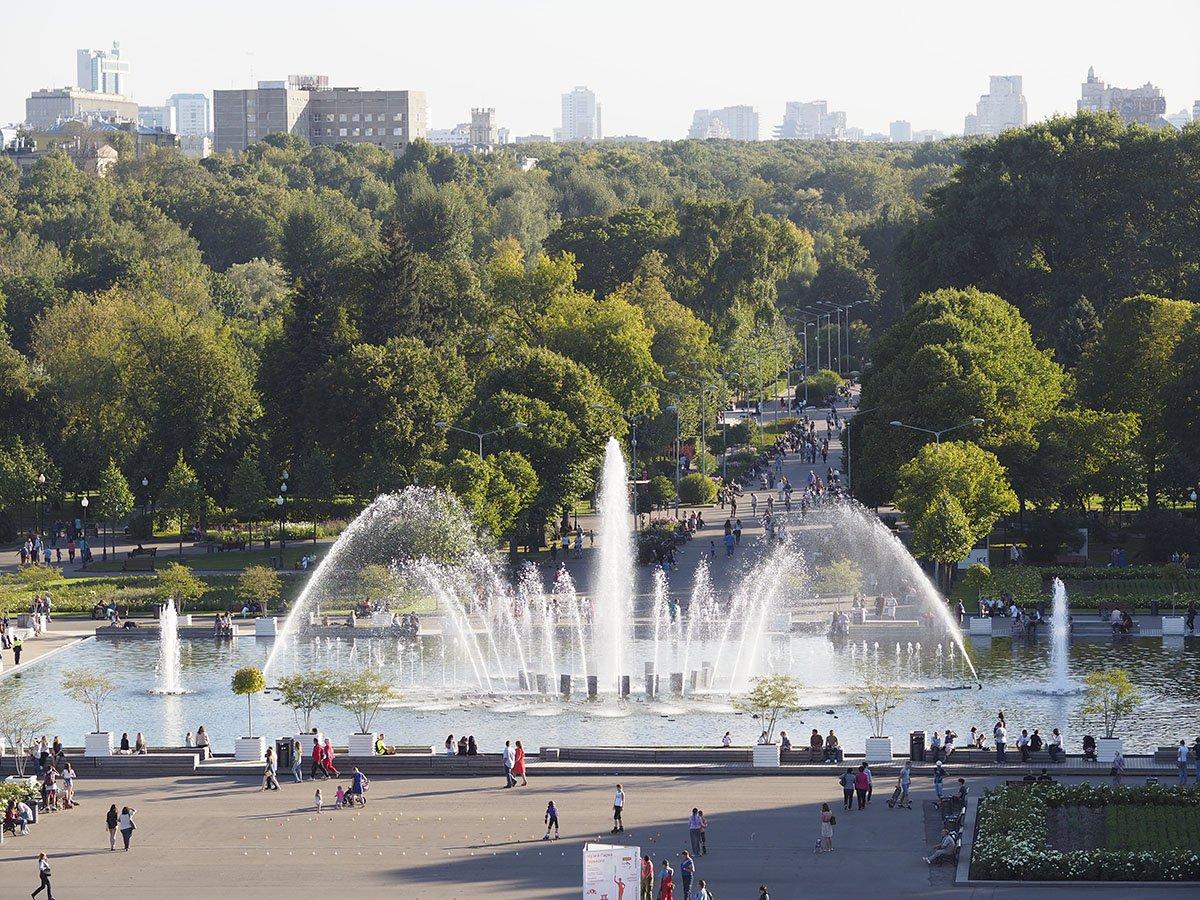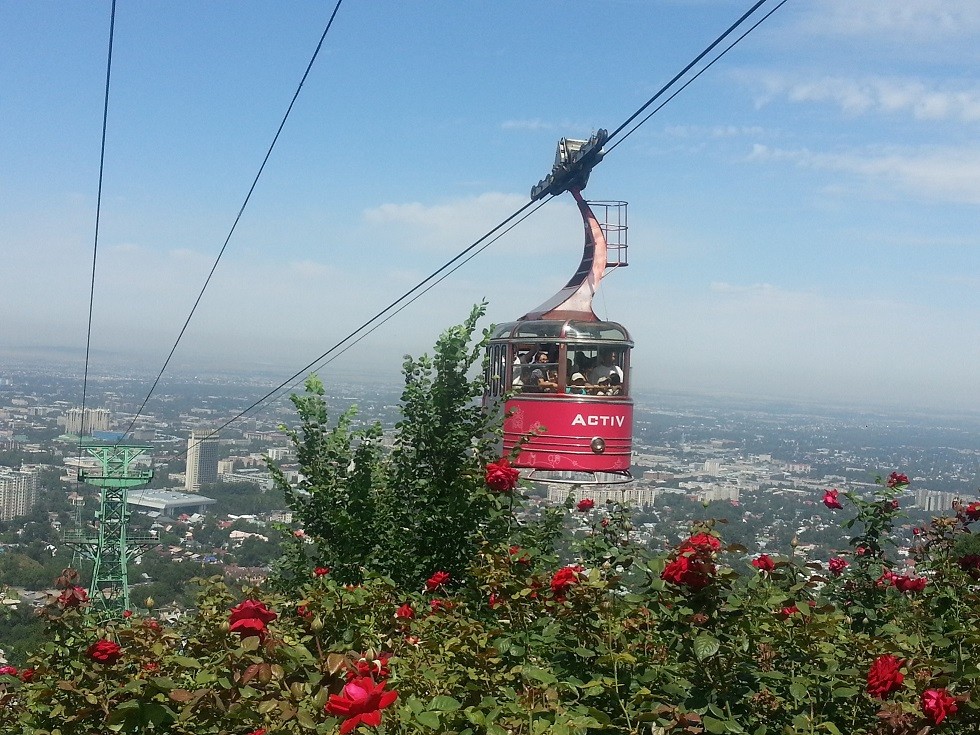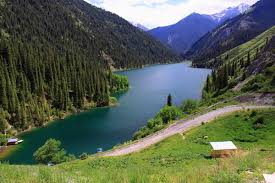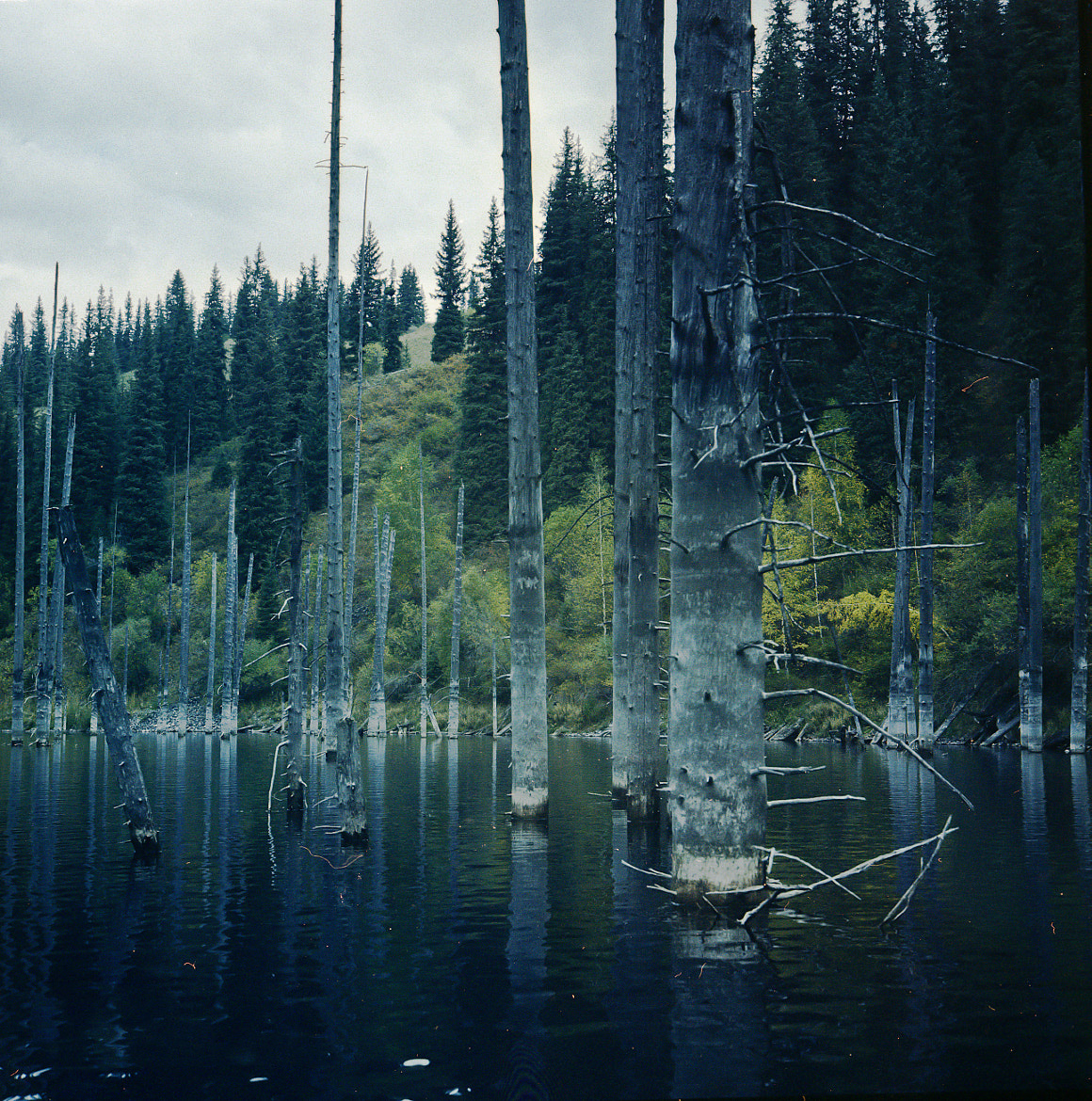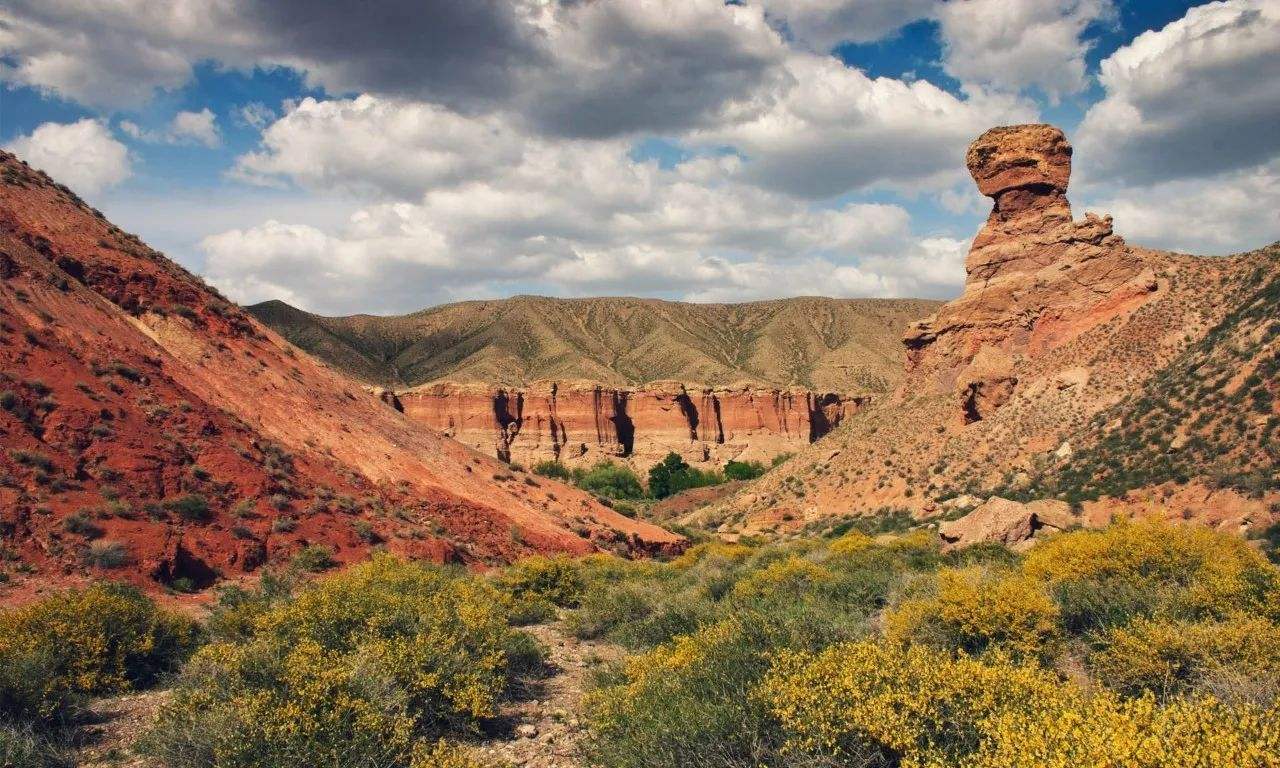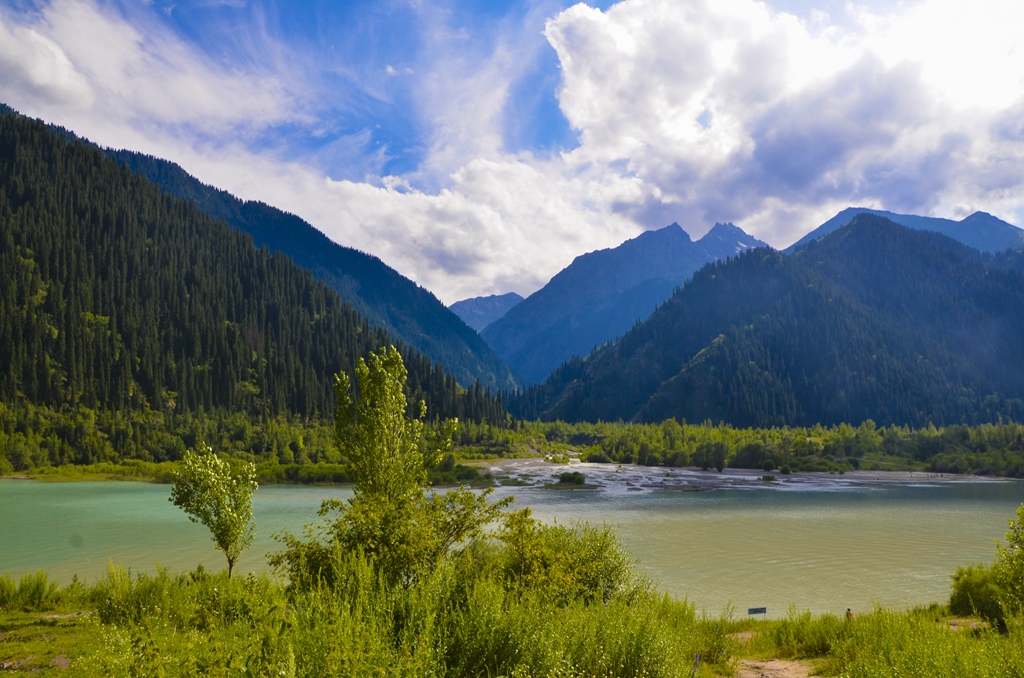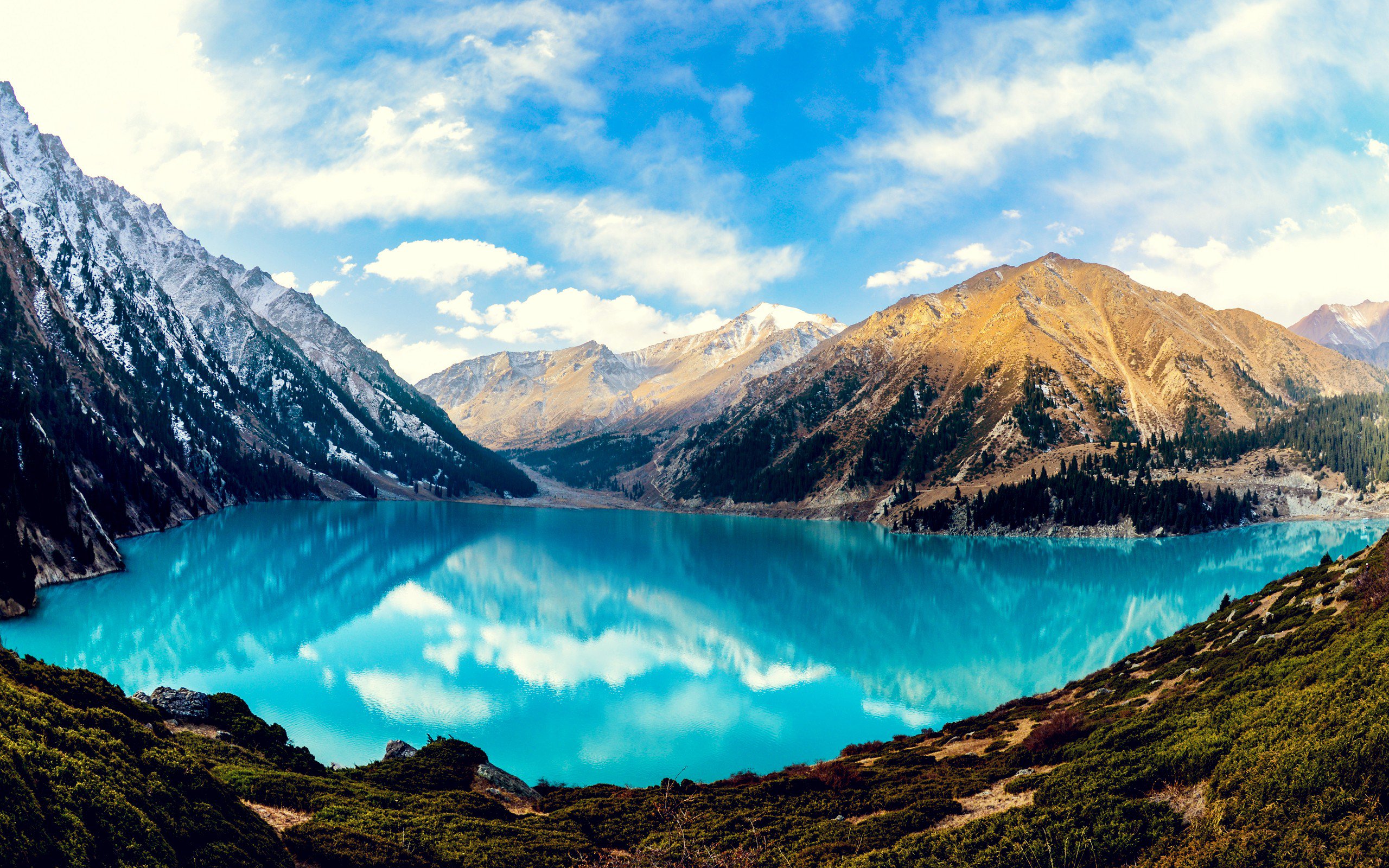Central Park, also known as Gorky Park, is an urban park located in the Medeusky district of Almaty. It was founded in 1856, and was originally called The State Garden. In the park there are the main types of trees such as karagach, oak, aspen, maple, pine, spruce, poplar, and birch; artificial water reservoirs, attractions such as a water park, Rodina cinema, sports complex, cultural venues, and public catering establishments. There are also children's attractions, which include a children's railway, an aqua park and other entertainment venues.
Central Park is one of the most popular parks in Almaty and a good recreational space for both walking and, entertaining the children. The Park covers area of 100 Hectares. The location of the park, as it suggests, is in central Almaty and is close to the Green Bazaar and also Panfilov Park. Gorky Park was named after the Russian author Maxim Gorky and the locals sometimes refer to the park as Park Gorkogo.
The Park has facilities for all, with Shady walks and shrubs, water features, flower beds and arrangements and in one area, an amusement park for the children with rides on both the fun fair and horses etc.
The Park is especially good for kids. There are fairground attractions, as well as horse, camel and donkey rides.
The history of the park goes back to the emergence of civil settlements around the fortification of Verniy and the development of fisheries. For the first time, the park was laid as a state garden by a scientist-gardener G. Krishtopenko in 1856; in the floodplain of the small Almaty river, as a place for walking and resting officers of the Vernensky garrison. Krishtopenko, who had experience in the Crimea, planted the first deciduous and coniferous trees in the garden. For his work, Krishtopenko drew lovers of gardening-vernentsev Kutaberdin, Sergeev, Chvanov and others. After studying the climatic conditions and the structure of the soil, Krishtopenko came to the conclusion that not only Central Asian plants, but also species characteristic of Central Russia could grow in the garden, as well as in the entire fortification of the city. In 1868, the seedlings and the seeds were delivered to Verniy from the Nikitsky Botanical Garden, and the Penza School of Horticulture in Tashkent.
In 1874, Krishtopenko handed over his leadership the brother of the famous forester of Verniy, Eduard Baum-Karlu. Because of this, the park turned into a place of national holidays. The State Garden was intended for the cultivation of fruit, ornamental plants, vegetables, raising silk and the creation of apiaries. In the years from 1869 to 1875, a greenhouse was built, flowerbeds were broken, a children's playground was set up for planting, and the Eduard Baum, a school of horticulture was opened for 10-15 pupils. With the creation of the city, Verniy Park became a place of rest for the townspeople: here they set up buffet and kitchens, built dance floors, gazebos, installed a yurt for billiards and tables for games. In Tsarist times, the entrance was paid accessed.
During the 1905 Russian Revolution, laborer workers along with the youths held rallies and gatherings at the logs. During the Russian Civil War in 1918, a defensive Red Army line was located in the park. In 1919, an Aytysh was held in the park with the participation of Dzhambul. In 2014, a street workout location was launched at the park.

